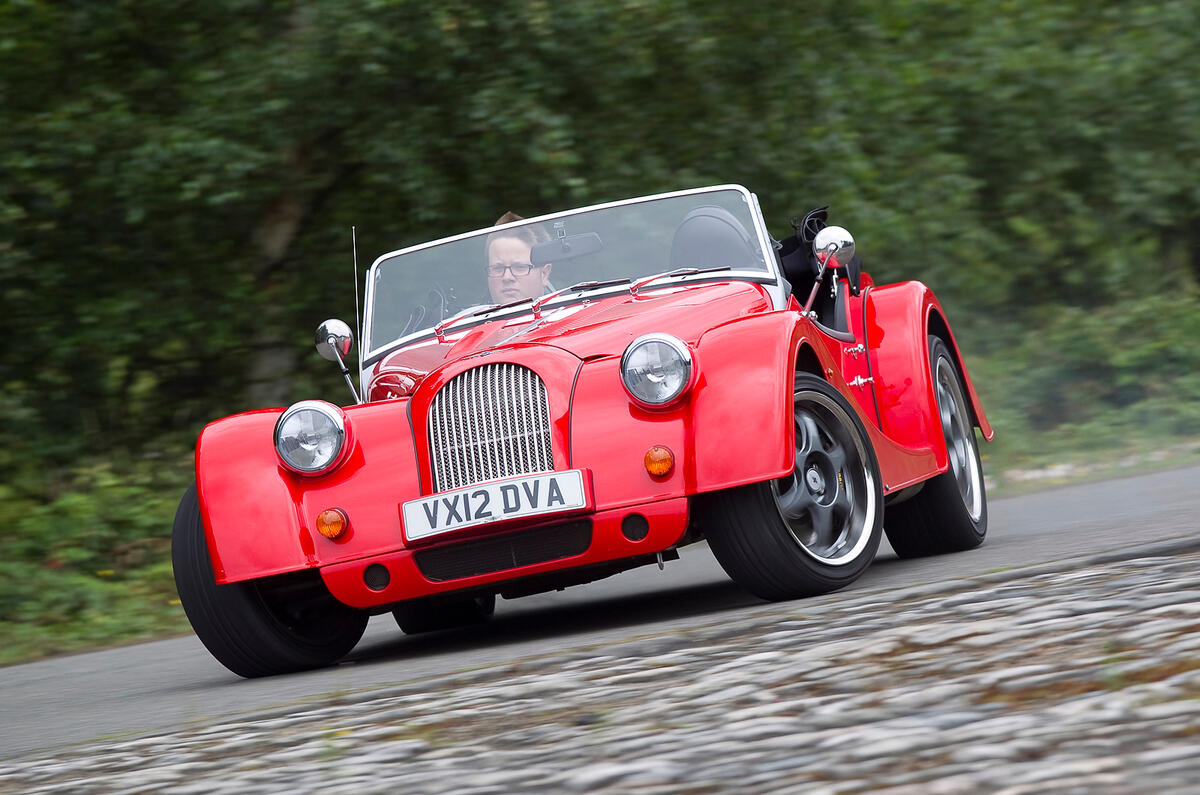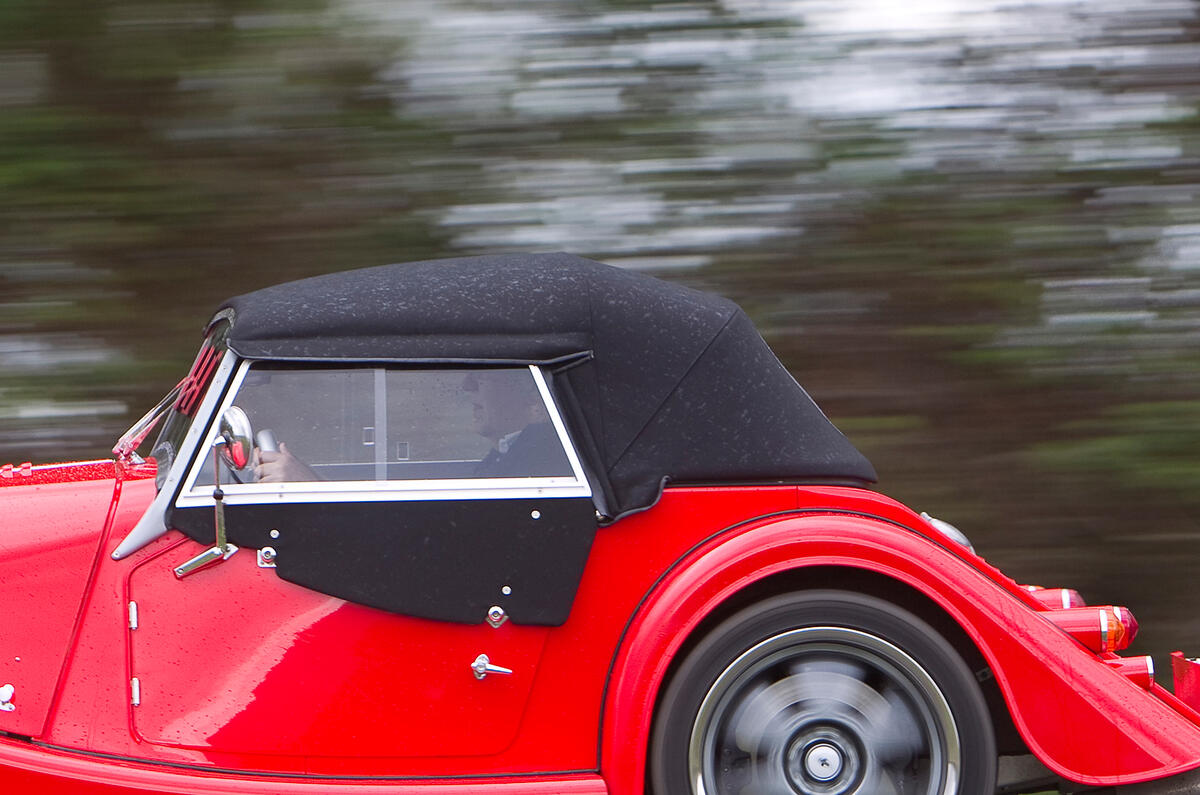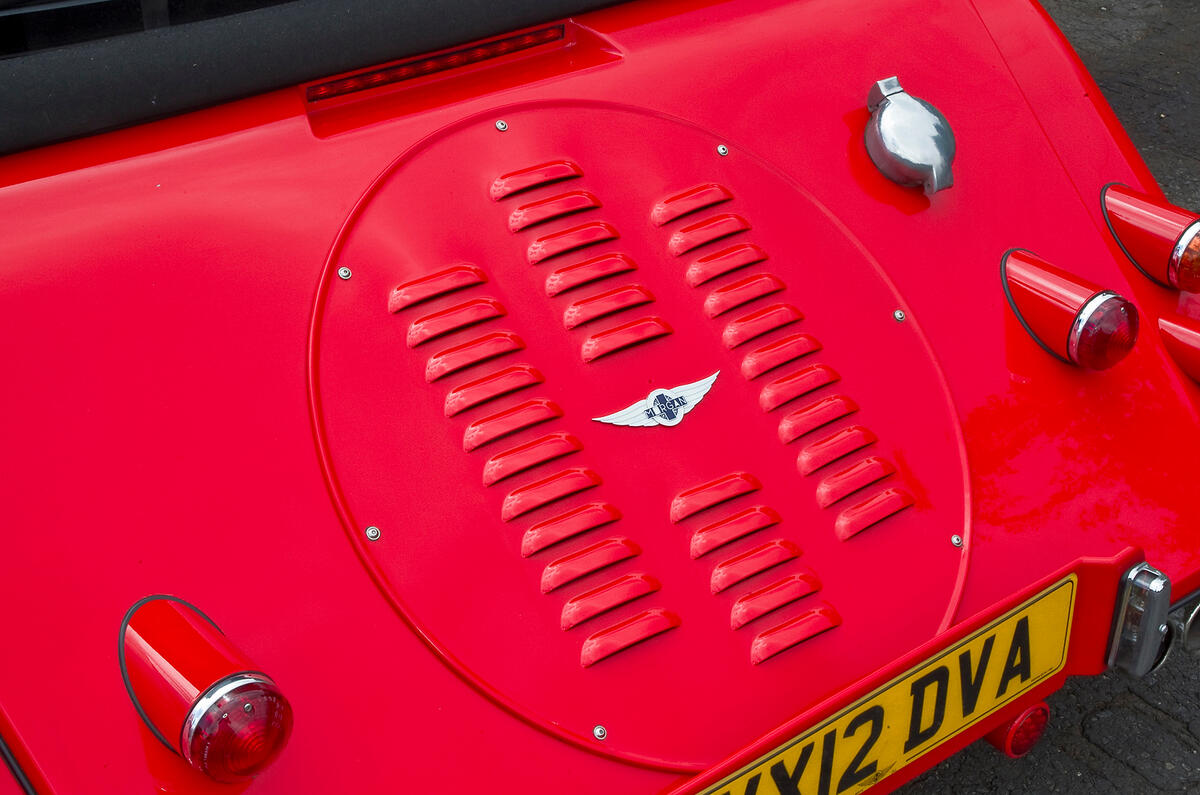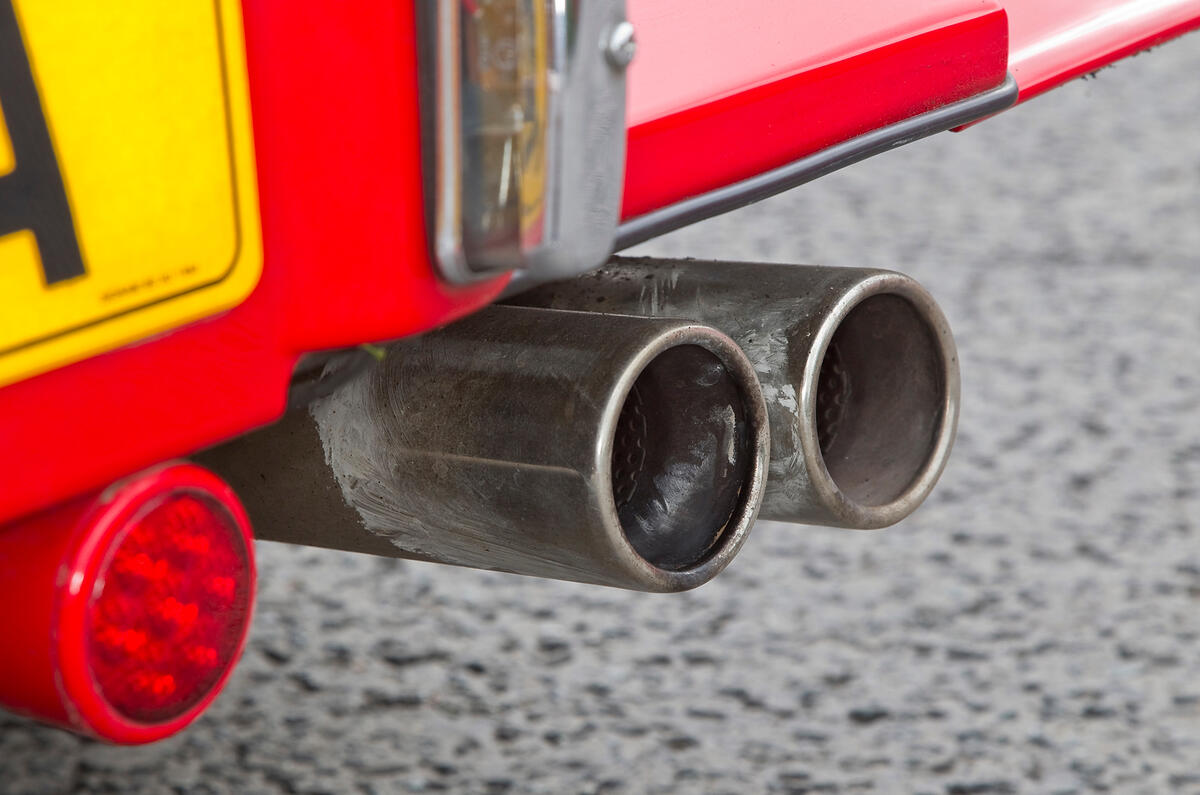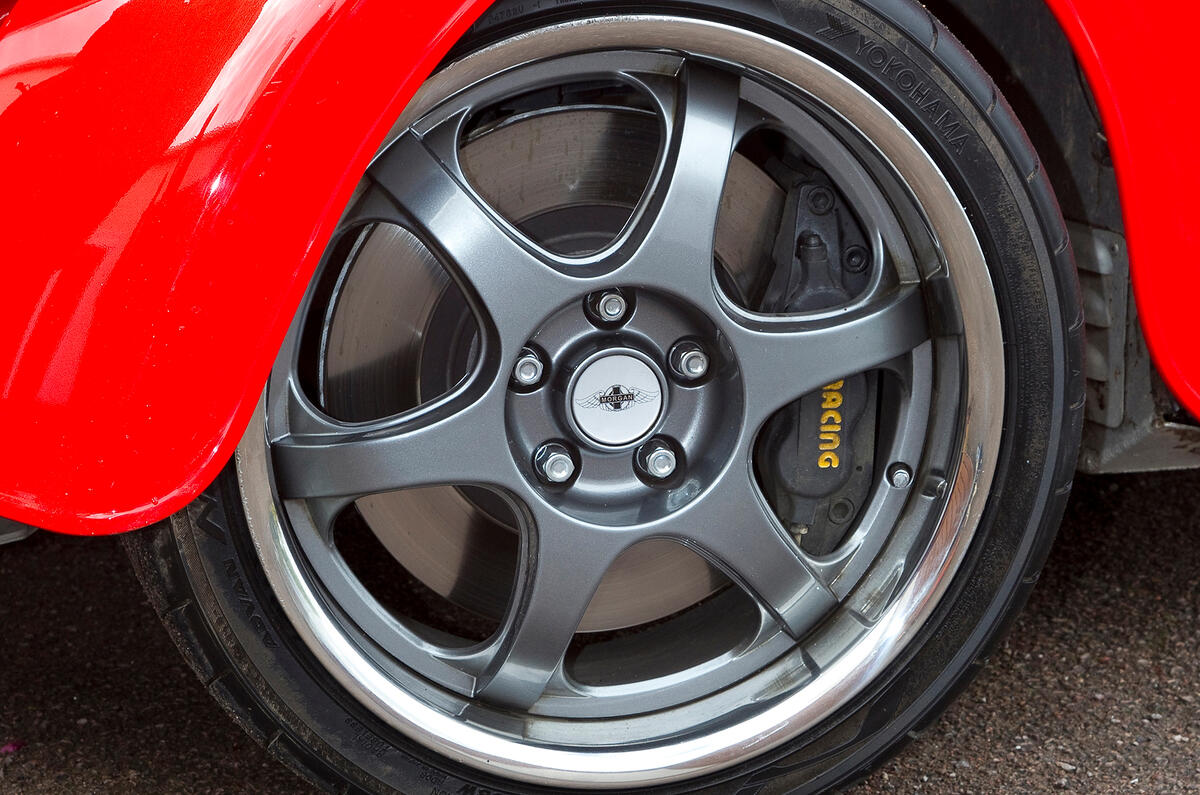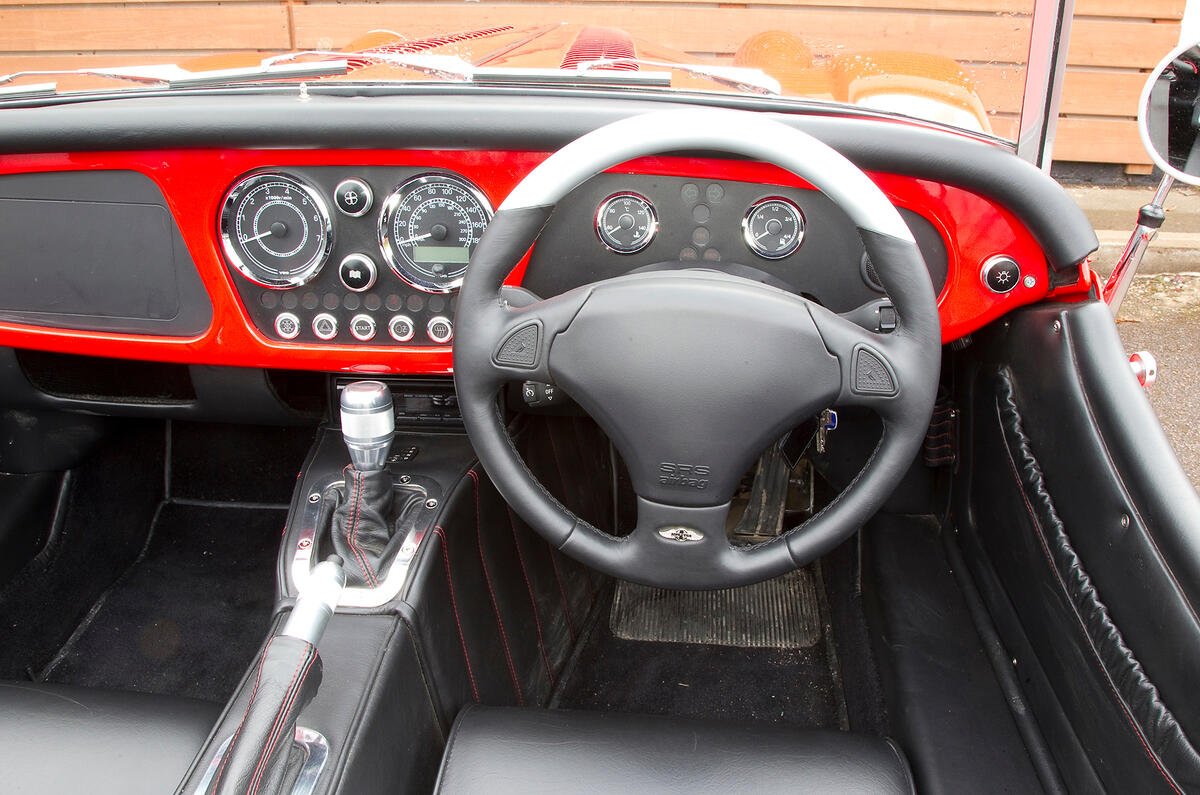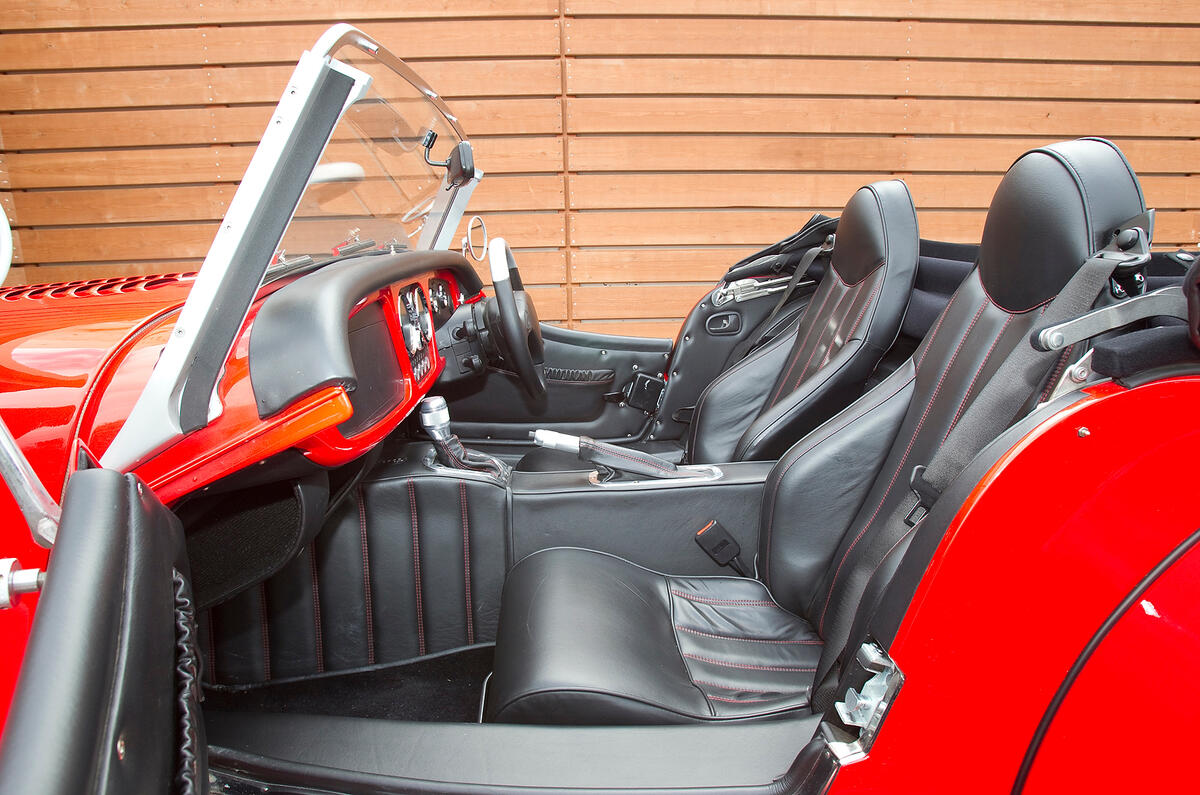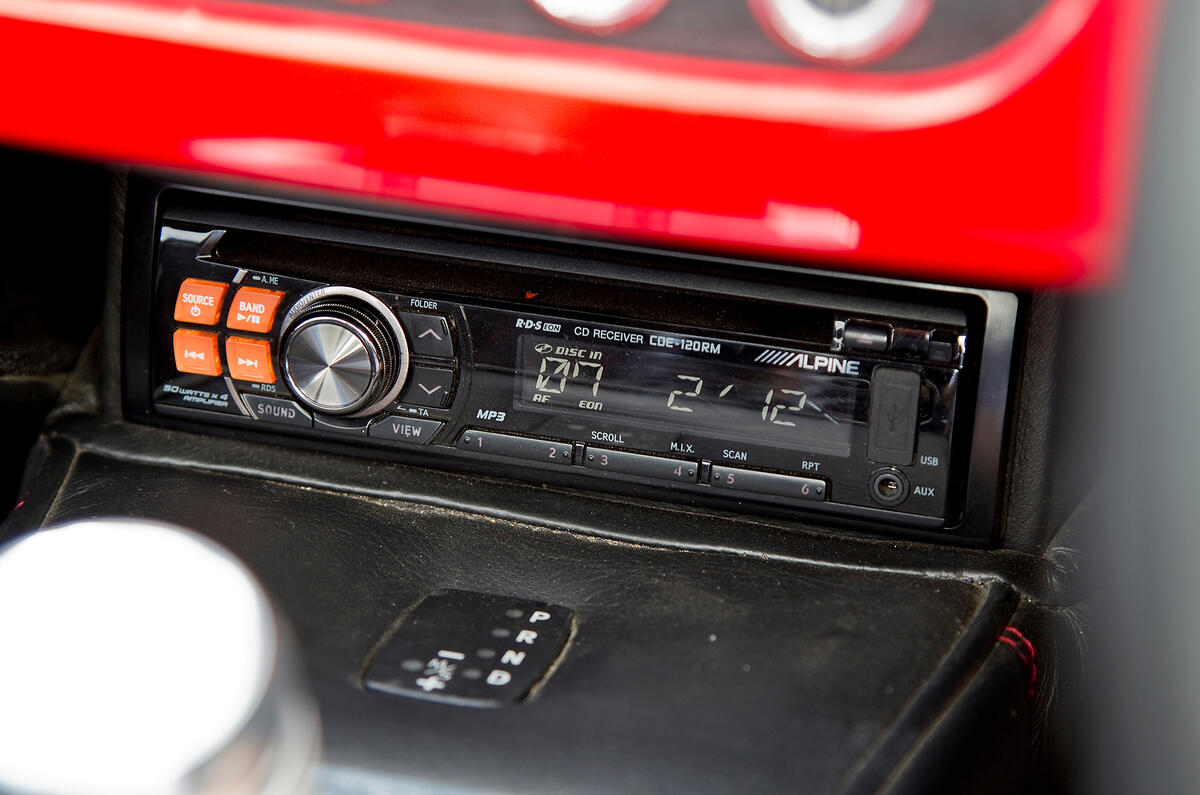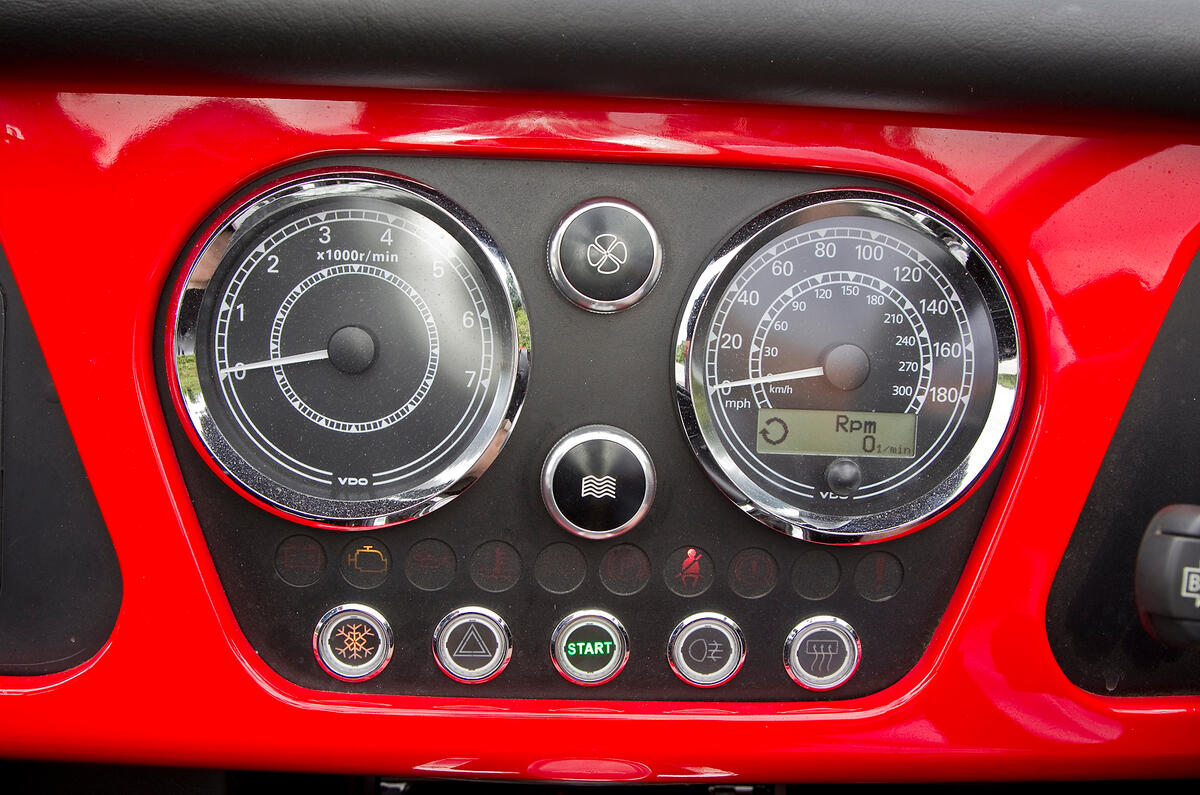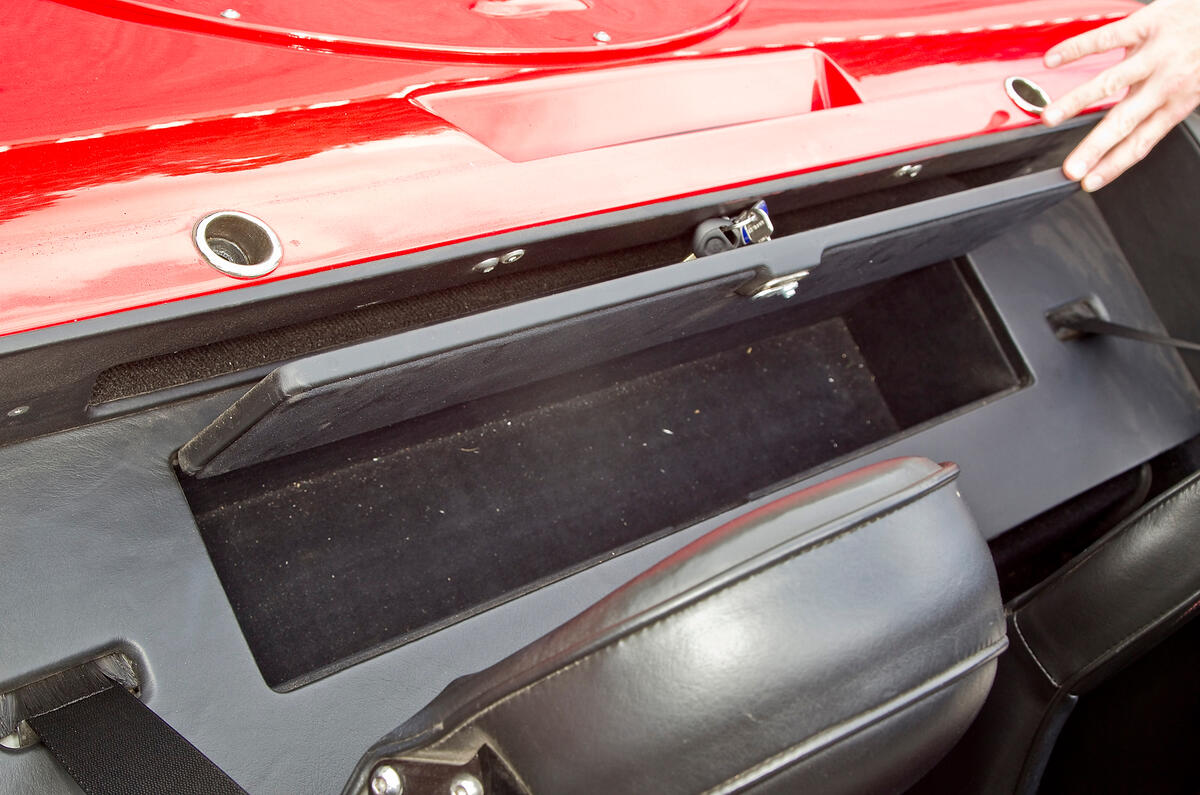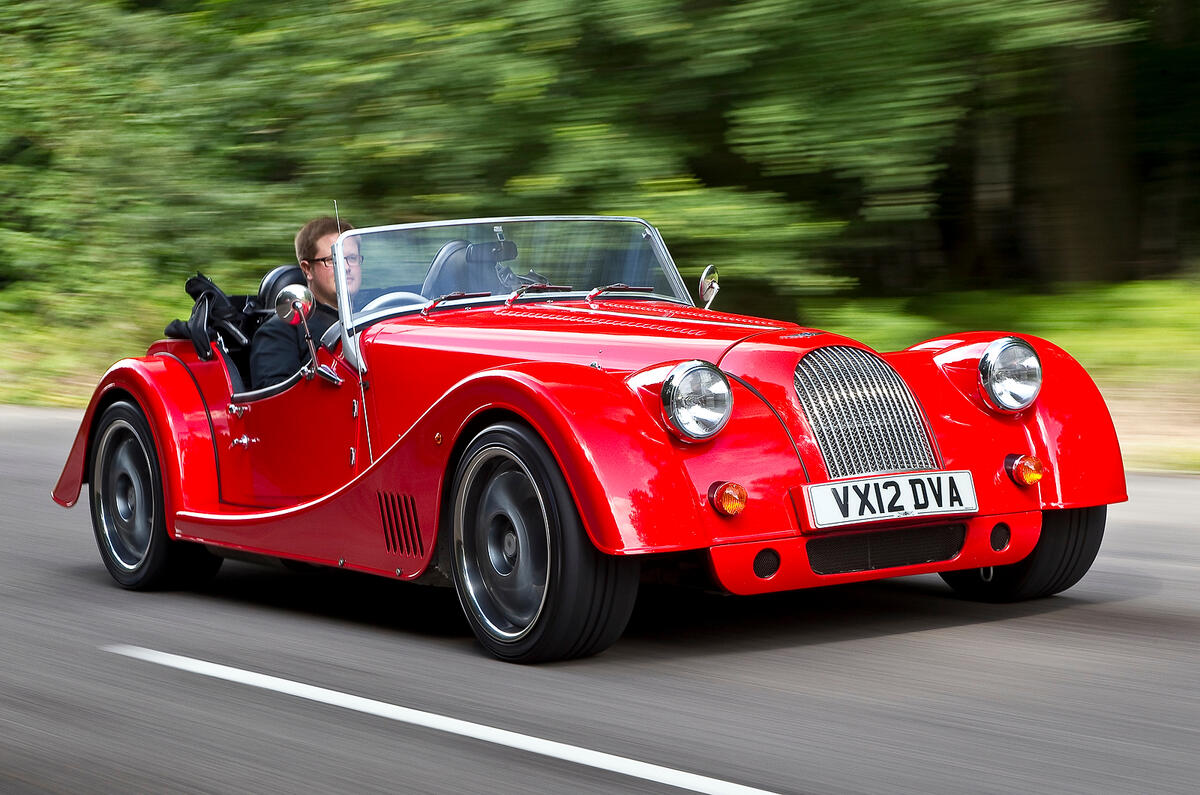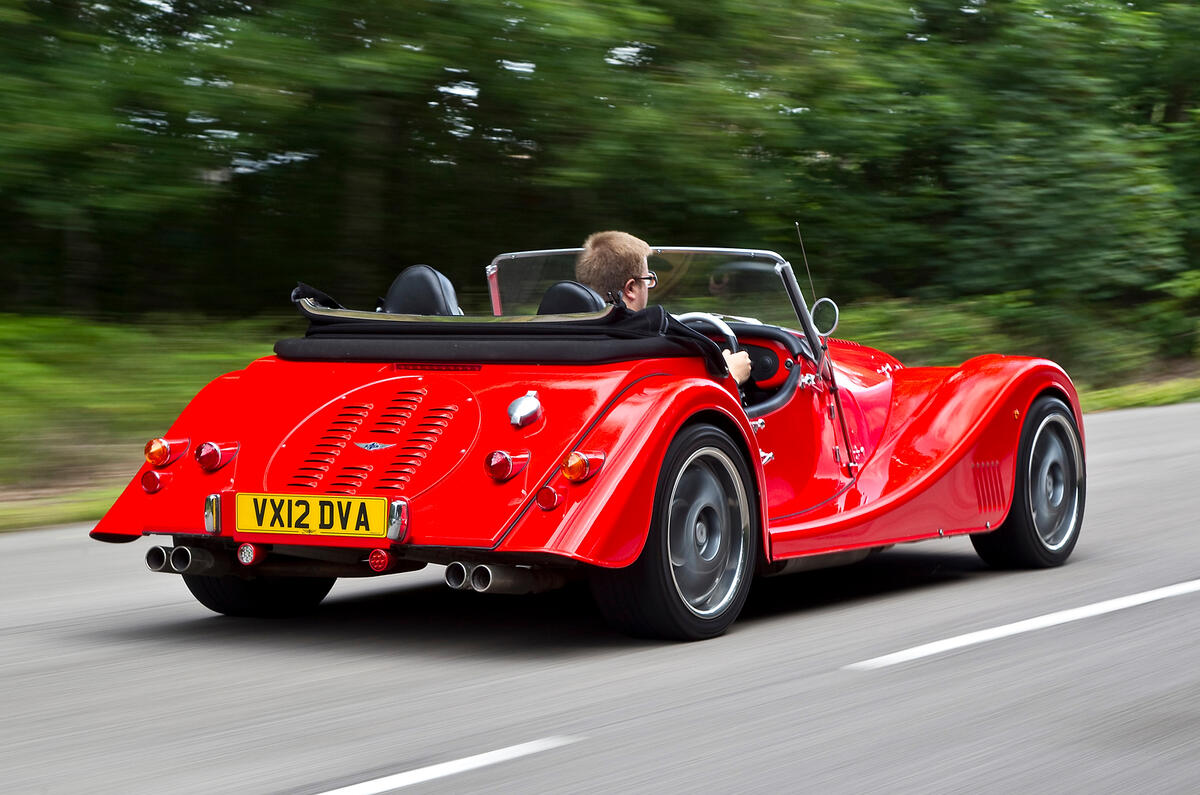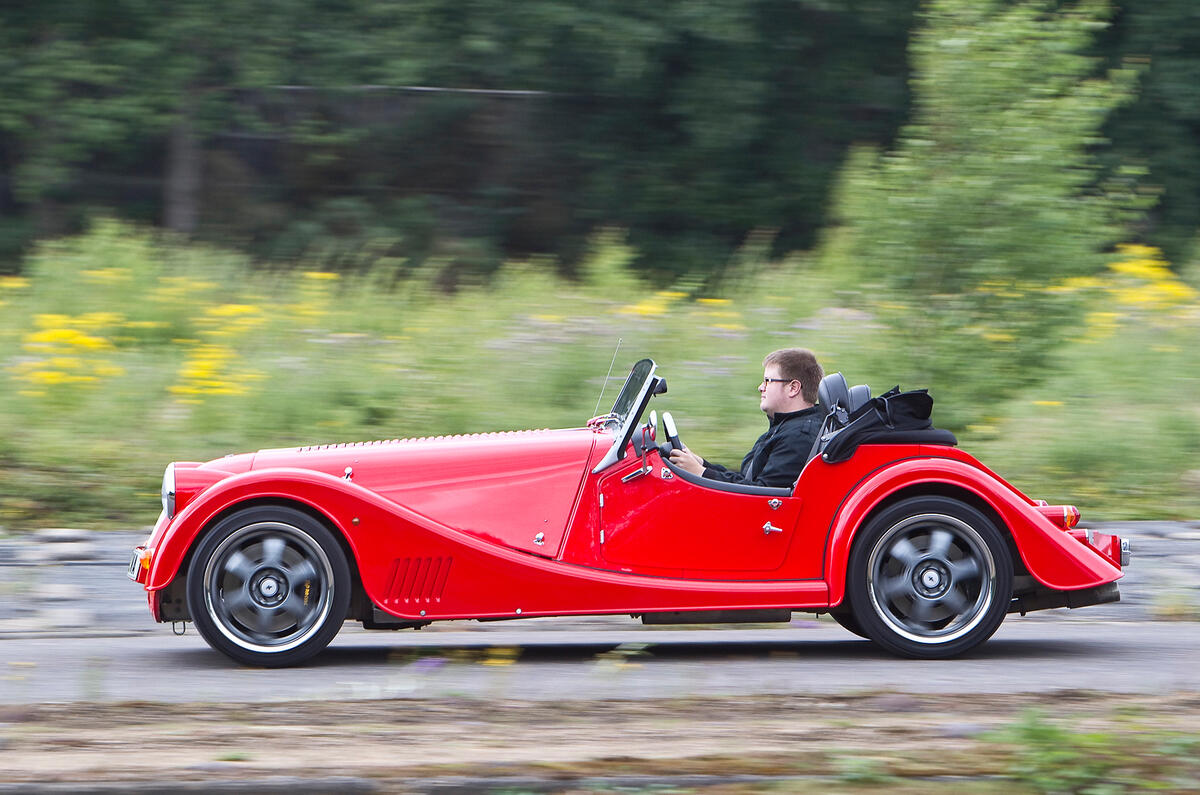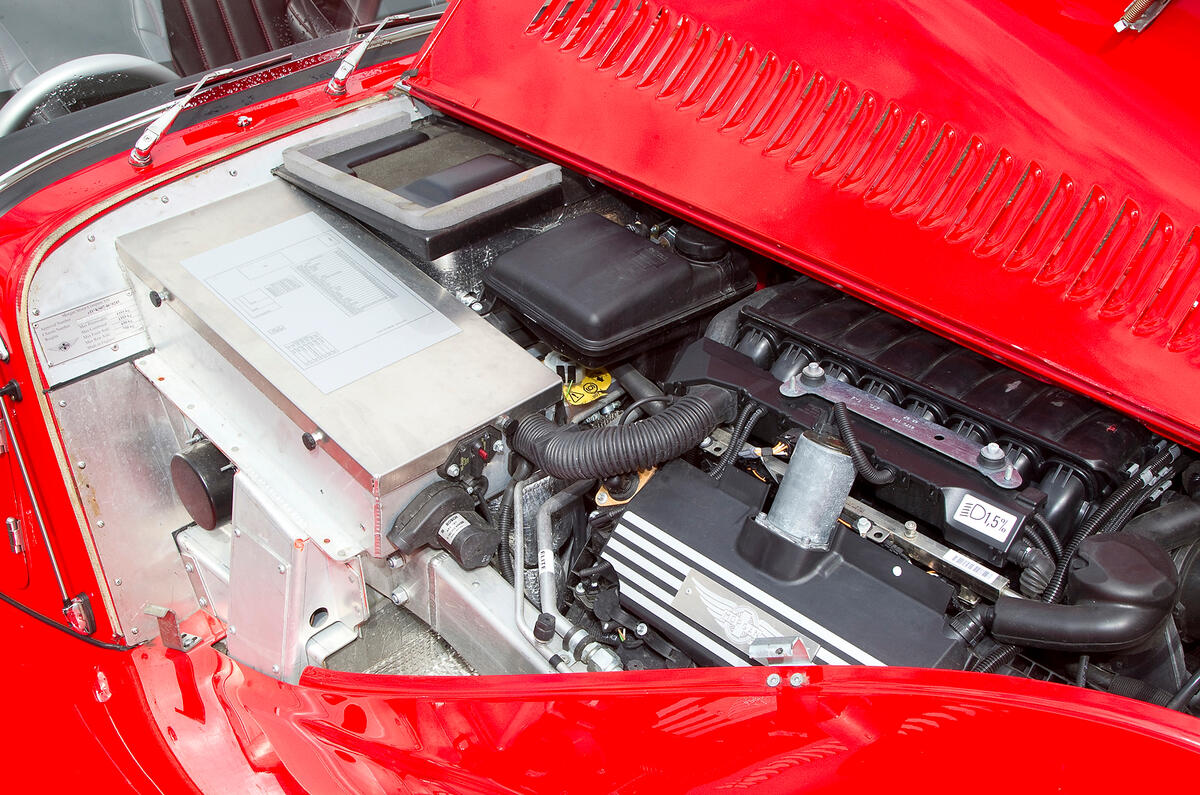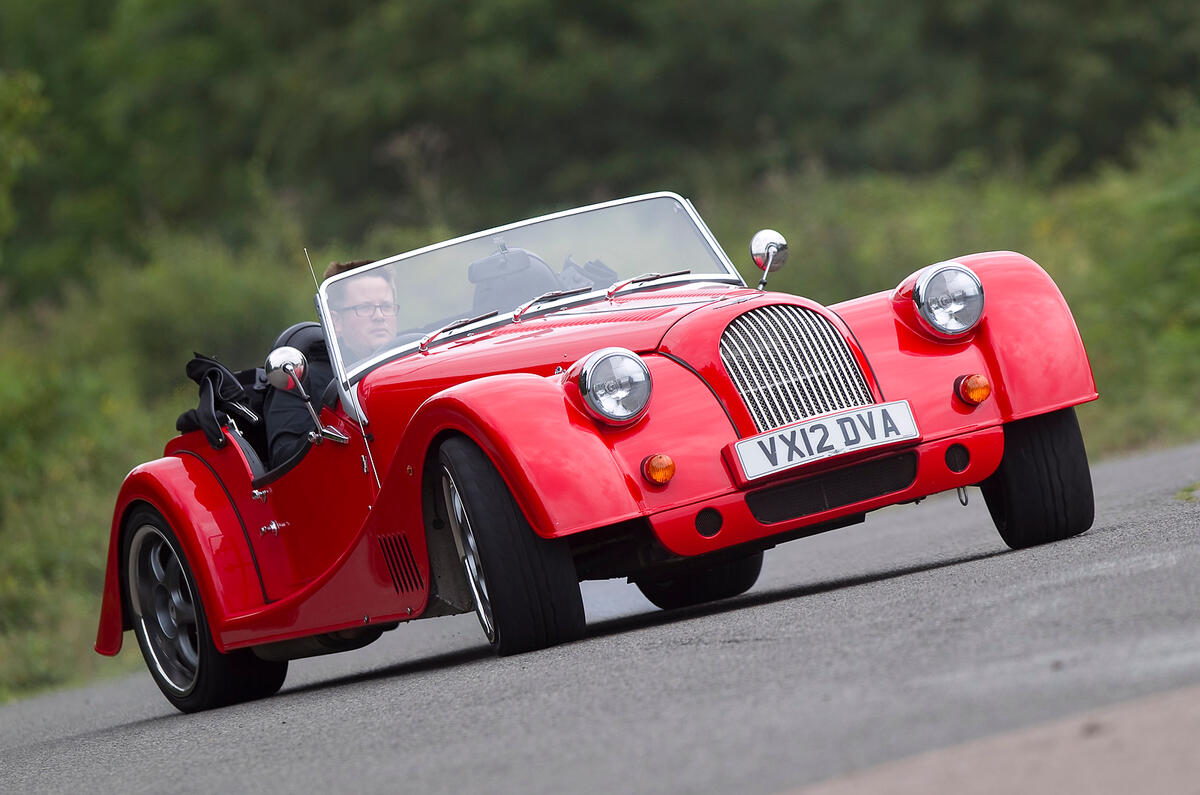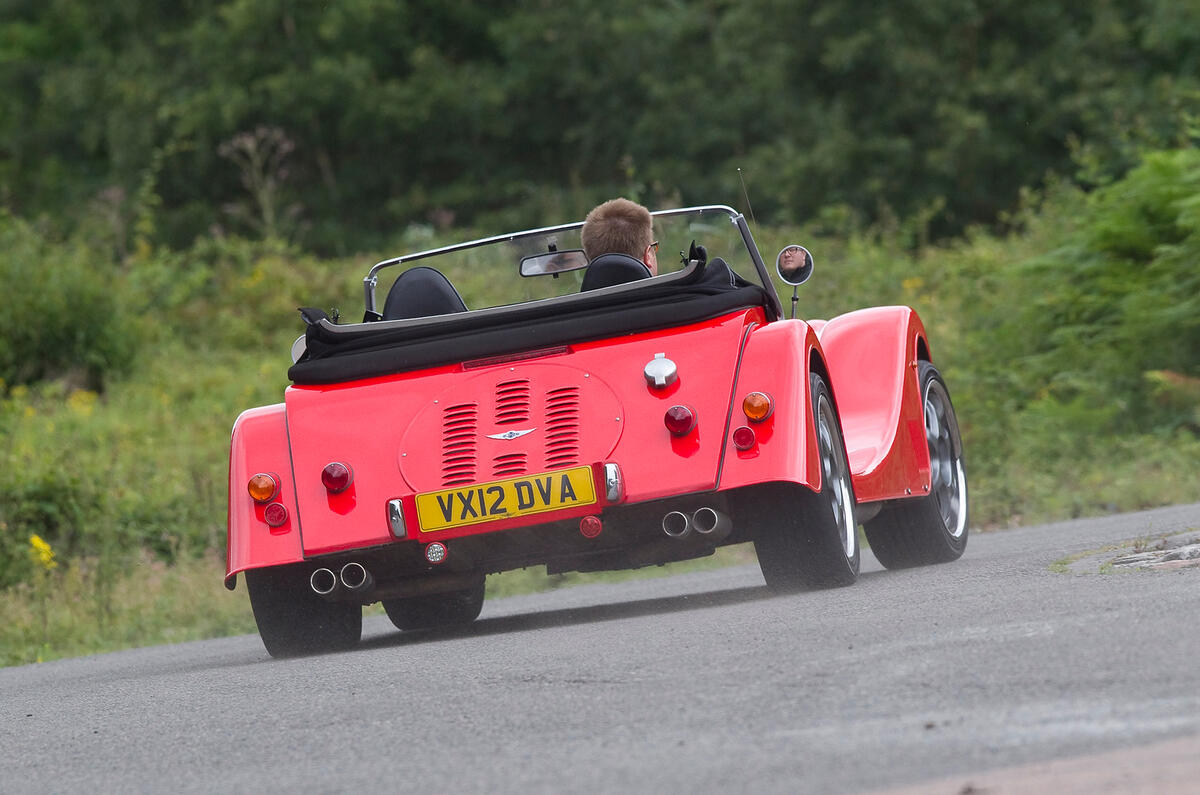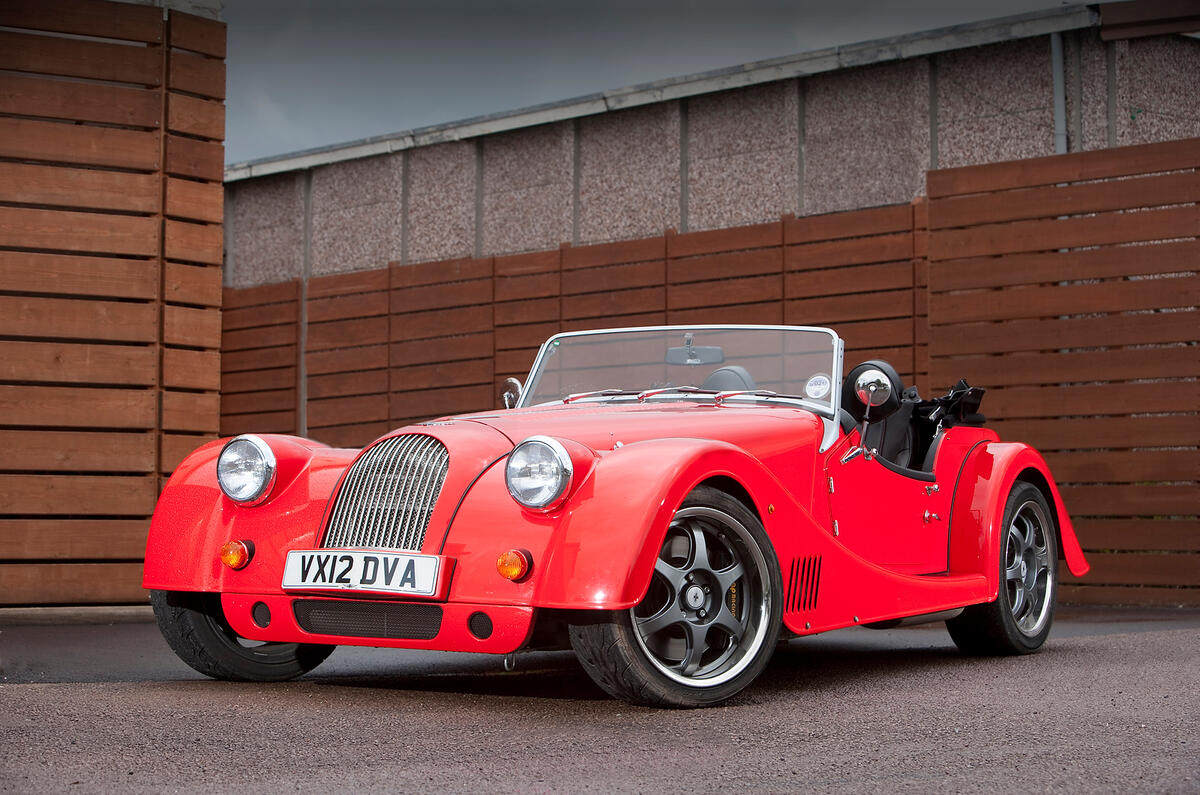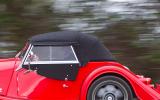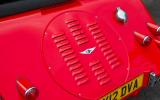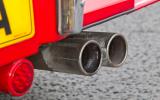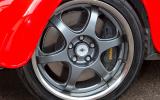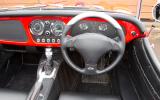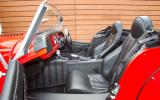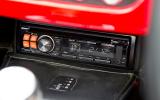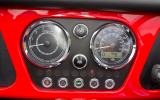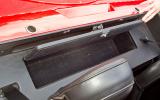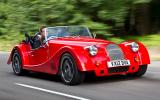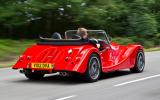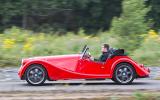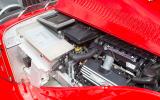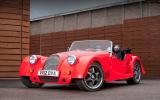The Morgan Plus 8, equipped with Rover’s mighty V8, was pioneered in the late 1960s and is credited with sealing the firm’s enduring popularity. The niche appeal of the firm's three-wheeled cars limited Morgan's sales as its only product until 1935, although that is something it has returned to.
Meanwhile, the Aero 8, on which this new generation of Plus 8 is based, is the direct descendent of the 1997 GT2 Le Mans car that Morgan built for the FIA GT series.
Placing a V8 engine in the front of the traditional Morgan roadster was a wonderfully barmy idea in the 1960s. The Plus 8 was Britain’s fastest-accelerating production car for a time and proved so endearing that it remained on sale, in relatively little-altered form, until midway through the last decade.
Production of the traditional roadster has continued alongside the new-look, aluminium-chassis Aero series and 3 Wheeler, which have stolen most of the public’s attention. However, the Plus 8, in the form of a grunty old V8 in an even older bodyshell, has been missed, and nowhere more so than in the US, where the traditional roadster has been unavailable in any guise.
The old Plus 8’s chassis was no longer suitable to take a ferocious modern powertrain and associated running gear, but Morgan has found an answer: take today’s componentry and mate it with the old stager’s looks. What we have here is precisely that: a traditional-looking Morgan bearing the return of the Plus 8 name and with all the hallmarks of an old-school British roadster. Let’s see how it measures up.


